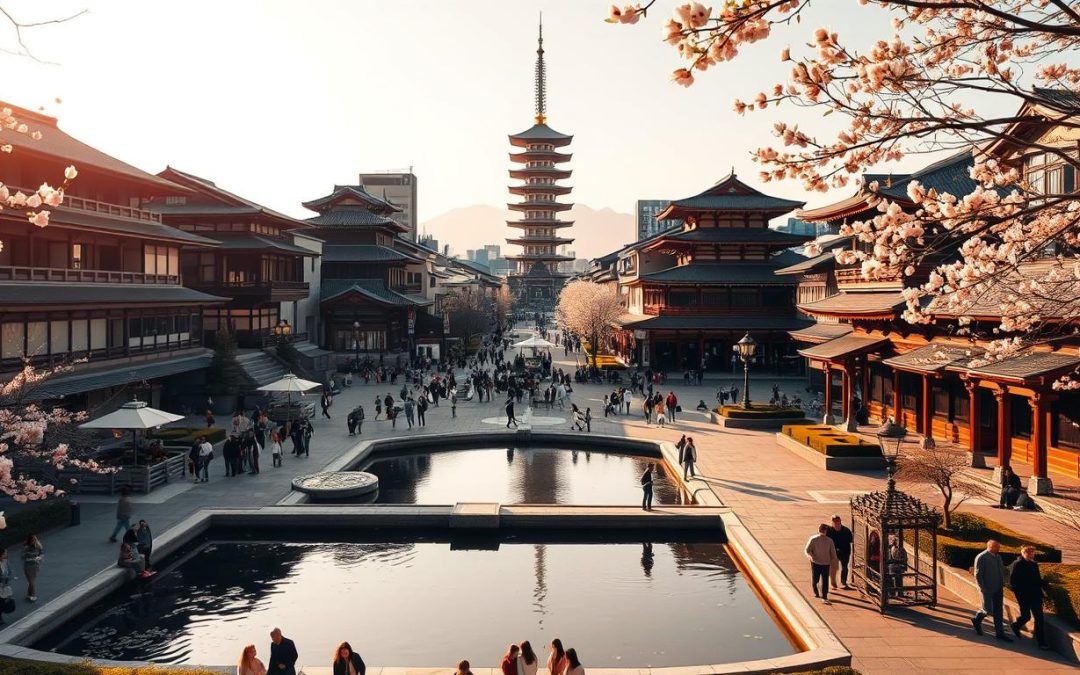Have you ever wondered why certain places feel like stepping into a different era? This city, with its rich heritage and modern charm, offers a unique blend of the past and present. Known as the cultural heart of its region, it’s a destination that captivates travelers from around the world.
From serene temples to bustling markets, this city is a treasure trove of experiences. Whether you’re exploring ancient shrines or savoring local delicacies, every corner tells a story. Its vibrant history, spanning over a millennium, is reflected in its architecture, traditions, and daily life.
With 17 UNESCO World Heritage Sites, it’s no surprise that this city is a favorite among history enthusiasts and casual visitors alike. Ready to uncover its secrets? Let’s dive into the top experiences that make this destination unforgettable.
Key Takeaways
- Discover the city’s unique blend of historical and modern attractions.
- Explore 17 UNESCO World Heritage Sites, each with its own story.
- Experience the vibrant culture through temples, markets, and local cuisine.
- Learn about the city’s rich history, spanning over 1,200 years.
- Enjoy seasonal highlights like cherry blossoms and traditional festivals.
Introduction: Discover the Magic of Kyoto
What if you could step into a city where history whispers from every corner? This is the essence of Kyoto, a place where the past and present coexist in harmony. For over 1,000 years, it served as the capital of Japan, shaping the nation’s culture and traditions. Today, it remains a treasure trove of heritage, offering visitors a chance to experience its timeless charm.
Kyoto is home to 17 UNESCO World Heritage Sites, each a testament to its rich history. From the iconic Kiyomizu-dera Temple to the golden splendor of Kinkaku-ji, these landmarks are meticulously preserved. Did you know that Kyoto was spared from wartime bombing due to its cultural significance? This decision allowed its ancient treasures to survive intact, making it a living museum of Japan’s past.
Getting around the city is an adventure in itself. The local transportation network, including buses and trains, is efficient but can be a bit challenging for first-time visitors. Pro tip: A day pass can save you time and money as you explore the city’s many attractions. Whether you’re wandering through historic streets or marveling at serene gardens, Kyoto’s unique blend of tradition and modernity will leave you spellbound.
So, what makes Kyoto so magical? It’s the way its temples, festivals, and daily life connect you to a world that feels both ancient and alive. Ready to uncover its secrets? Let’s dive deeper into the heart of this enchanting city.
Kyoto Prefecture, Japan: Best Things to Do – Top Picks
Planning a trip to a city rich in culture and history can feel overwhelming, but it doesn’t have to be. This guide is designed to simplify your journey, offering a curated list of the best experiences to make your visit unforgettable. Whether you’re a first-time visitor or a seasoned traveler, this listicle is your ultimate companion.
What makes this guide unique? It’s packed with practical tips and time-saving strategies. For example, bundling nearby attractions can help you maximize your day trip. You’ll also find insights into cultural experiences that go beyond the usual tourist spots.
This guide is especially helpful for first-time visitors. It breaks down the city’s highlights into manageable sections, so you can focus on enjoying your trip rather than stressing over logistics. From iconic temples to hidden neighborhoods, every recommendation is carefully selected to ensure a well-rounded experience.
Ready to dive deeper? The following sections will walk you through Kyoto’s must-see attractions, local gems, and travel tips. Whether you’re exploring serene gardens or savoring local cuisine, this guide has you covered. Let’s make your trip to Kyoto seamless and unforgettable.
Iconic Temples and Shrines to Explore
Imagine stepping into a world where every corner tells a story of ancient traditions. The city’s temples and shrines are not just places of worship but gateways to understanding its rich cultural heritage. Visiting these sites offers a chance to connect with history and spirituality in a profound way.
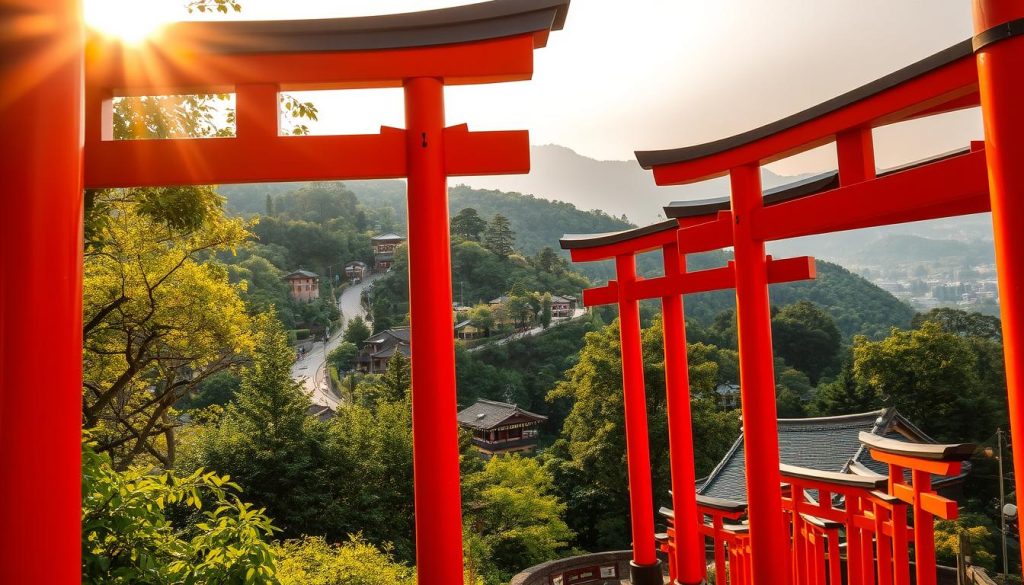
Fushimi Inari Shrine’s Torii Gates Experience
One of the most iconic shrines in the city is Fushimi Inari, famous for its thousands of vermilion torii gates. Walking through the enchanting tunnel of gates feels like stepping into another world. Each gate is donated by individuals or businesses, symbolizing gratitude and hope.
This shrine is dedicated to Inari, the deity of rice and prosperity. It’s a place where visitors can embrace both serenity and mystery. The trails lead up the mountain, offering stunning views and a peaceful escape from the bustling city.
Kiyomizu-dera and Other Historic Temples
Another must-visit is Kiyomizu-dera, a UNESCO World Heritage Site with over 1,200 years of history. The temple’s wooden terrace provides panoramic views of the city, especially breathtaking during cherry blossom season. Its name, meaning “pure water,” comes from the nearby waterfall, where visitors can partake in a symbolic ritual.
Other notable temples include the Golden Pavilion, known for its stunning reflection in the surrounding pond, and Nanzen-ji, a Zen temple with beautiful gardens. Each site offers a unique glimpse into the city’s spiritual and architectural legacy.
- Experience the cultural significance of visiting these sacred sites.
- Walk through the mesmerizing torii gates at Fushimi Inari.
- Discover the history and symbolism of Kiyomizu-dera.
- Enjoy the serene atmosphere and breathtaking views.
Whether you’re drawn to the mystical allure of Fushimi Inari or the historic charm of Kiyomizu-dera, these landmarks promise an unforgettable journey into the heart of the city’s spiritual heritage.
Hidden Gems and Local Neighborhoods
Ever wandered through a neighborhood where every step feels like a journey through time? Gion, with its narrow lanes and historic charm, offers just that. This area is a treasure trove of culture, where tradition meets everyday life.
Strolling through Gion’s streets, you’ll find yourself surrounded by traditional wooden machiya houses. These structures, with their narrow facades, are a testament to the area’s rich architectural heritage. Each corner tells a story, making it a must-visit for those seeking authenticity.
Teahouses and local shops add to the charm. Many of these establishments have been around for generations, offering a glimpse into the past. You might even catch a glimpse of a geisha gracefully walking by, adding to the area’s mystique.
When exploring, remember to be respectful. Avoid intrusive photography and take time to appreciate the quiet beauty of the lanes. This is a place where history lives, and every moment is a chance to connect with it.
Whether you’re drawn to the shops, the teahouses, or the chance to see geisha, Gion promises an unforgettable experience. It’s a thing you won’t want to miss on your visit.
Scenic Walks and Breathtaking Gardens
Have you ever felt the calm of nature wrap around you like a gentle embrace? The Arashiyama Bamboo Grove offers just that—a serene escape where towering bamboo stalks create a tranquil atmosphere. This iconic destination is a must-visit for anyone seeking peace and natural beauty.
Walking through the bamboo grove feels like stepping into another world. The tall, swaying bamboo creates a natural canopy, filtering sunlight into soft, dappled patterns. The gentle rustling of leaves adds to the mystical ambiance, making it a perfect spot for reflection.
Strolling Through the Arashiyama Bamboo Grove
To fully appreciate the magic of this place, visit early in the morning. The early hours are quieter, allowing you to enjoy the path without the crowds. The ancient stone walkways, lined with bamboo, lead you deeper into the grove, offering a sense of timelessness.
The garden surrounding the grove is equally enchanting. Lush greenery and manicured landscapes complement the natural beauty of the bamboo. It’s a classic experience that captures the essence of outdoor serenity.
- Experience the mystical ambiance of wandering through a bamboo grove.
- Visit early to avoid crowds and enjoy the peaceful atmosphere.
- Stroll along ancient stone paths lined with towering bamboo.
- Admire the lush, manicured gardens that surround the grove.
- Take in the natural views that define this iconic destination.
Whether you’re a nature lover or simply seeking a moment of calm, the Arashiyama Bamboo Grove offers an unforgettable experience. Its beauty and tranquility make it a highlight of any visit.
Culinary Adventures: Markets, Tea, and Sushi
What if your taste buds could take a journey through centuries of tradition? Nishiki Market, often called the “Kitchen of the City,” is where this adventure begins. With over 100 stalls spanning five blocks, this bustling marketplace has been a cornerstone of local life for more than 400 years.
At Nishiki Market, you’ll find an incredible variety of food. From fresh seafood to Kyoto’s famous kyo-yasai vegetables, every stall offers something unique. Don’t miss tako-tamago, a quirky yet delicious treat featuring a baby octopus stuffed with a quail egg. It’s a must-try for adventurous eaters.
The market’s vibrant atmosphere is a feast for the senses. The aroma of grilled skewers, the sight of colorful displays, and the chatter of vendors create an unforgettable experience. It’s not just a place to eat—it’s a window into the city’s culinary soul.
Discovering Nishiki Market Delights
While exploring, take time to delve into the local tea culture. Matcha Sweets Sawawa, for instance, sources its matcha from Uji, the birthplace of Japanese green tea. A cup of freshly brewed matcha is the perfect way to complement your market adventure.
Here are some tips to make the most of your visit:
- Visit between 10 am and 11 am to avoid the crowds.
- Bring cash, as many stalls don’t accept cards.
- Check operating hours—most shops close by 6 pm, but some restaurants stay open until 9 pm.
- Be mindful of Wednesdays, when smaller family-run shops may be closed.
Nishiki Market is more than just a place to eat—it’s a celebration of food, history, and culture. Whether you’re sampling street snacks or sipping on tea, every moment here is a chance to connect with the city’s rich culinary heritage.
Day Trips and Nearby Excursions
Exploring beyond the city limits can uncover hidden treasures just a short ride away. With excellent train connections and well-organized stations, planning a day trip is both easy and rewarding. These excursions not only enrich your travel experience but also offer a deeper understanding of the region’s history and culture.
Nara, Hiroshima, and Other Must-See Destinations
Nara, just 45 minutes by train, is a perfect half-day escape. Known for its sacred deer and ancient temples, it’s a blend of nature and history. Hiroshima, though a longer trip at over two hours, is a poignant reminder of resilience, with its Peace Memorial Park and Museum.
Other nearby gems include Uji, famous for its green tea, and Himeji, home to Japan’s most iconic castle. Each destination is easily accessible from the central station, making it simple to plan your itinerary.
- Nara: Visit the deer park and Todaiji Temple, a UNESCO World Heritage Site.
- Hiroshima: Explore the Peace Memorial Park and its historical exhibits.
- Uji: Savor premium green tea and visit the Byodo-in Temple.
- Himeji: Marvel at the stunning Himeji Castle, a national treasure.
To make the most of your day trip, consider these tips:
- Start early to maximize your time at each destination.
- Use a JR Pass for unlimited travel on the train network.
- Check the station schedules to avoid long waits.
- Pack light, as you’ll be on the move throughout the day.
These excursions add depth to your journey, offering a mix of history, nature, and culture. Whether you’re feeding deer in Nara or reflecting on history in Hiroshima, each trip is a memorable adventure.
Immersive Cultural Experiences
Have you ever wanted to step into a world where every gesture tells a story? This is the essence of traditional tea ceremonies and geisha encounters. These practices are not just performances but windows into a refined cultural heritage that has been preserved for centuries.
The Art of the Tea Ceremony
A traditional tea ceremony is a ritual that embodies harmony, respect, and tranquility. Every movement, from the preparation of the matcha to the serving of the tea, is deliberate and meaningful. The host’s attention to detail creates an atmosphere of mindfulness and connection.
During the ceremony, you’ll notice the use of specific tools like the chawan (tea bowl) and chasen (bamboo whisk). These items are chosen with care, reflecting the season and the occasion. The experience is not just about drinking tea but about appreciating the artistry and philosophy behind it.
Geisha Encounters in Gion
Meeting a geisha is a rare and enriching experience. These skilled entertainers are trained in traditional arts like dance, music, and conversation. In the Gion district, you might catch a glimpse of them as they move gracefully between teahouses.
To respectfully enjoy this tradition, avoid intrusive photography and take time to observe their elegance. Many teahouses offer private performances, allowing you to engage with geisha culture in an authentic setting.
- Learn the steps of a traditional tea ceremony and its cultural significance.
- Understand the training and artistry behind geisha performances.
- Follow tips for respectful participation in these cultural practices.
- Appreciate the timeless charm of these immersive experiences.
| Activity | What to Expect | Tips for Participation |
|---|---|---|
| Tea Ceremony | Mindful preparation and serving of matcha | Observe quietly and follow the host’s lead |
| Geisha Encounter | Traditional performances and conversation | Respect their space and avoid flash photography |
These cultural practices offer more than just a glimpse into the past—they invite you to be part of a living tradition. Whether you’re sipping tea or watching a geisha perform, every moment is a chance to connect with a timeless legacy.
Historic Castles and Palaces
Step into a world where history and architecture tell tales of power and elegance. The city’s castles and palaces are more than just structures—they are gateways to a bygone era. Among these, Nijo Castle stands as a testament to feudal Japan’s rich history.
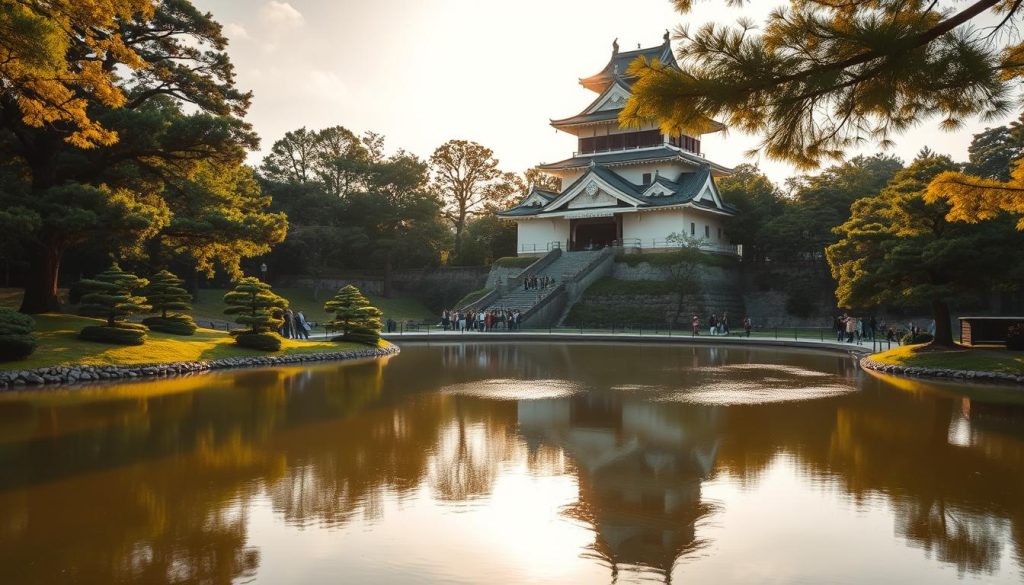
Exploring Nijo Castle and Imperial Heritage
Built in the early 17th century, Nijo Castle was originally the residence of Tokugawa Ieyasu, the first shogun of the Edo period. Its design reflects both grandeur and strategic ingenuity. The castle’s stone walls and surrounding moats were not just defensive features but also symbols of authority.
One of the most fascinating aspects of this place is its “nightingale floors.” These wooden floors were designed to chirp like birds when walked upon, alerting residents to intruders. Today, they add a unique charm to the visitor experience.
Over the centuries, Nijo Castle has transformed from a shogunal residence to a public historic site. It was designated a UNESCO World Heritage Site in 1994, recognizing its cultural and historical significance. Walking through its halls, you can almost feel the presence of the shoguns who once ruled here.
Architectural Marvels and Regal Atmosphere
The castle’s architecture is a blend of functionality and artistry. The Ninomaru Palace, with its intricate wood carvings and gold leaf decorations, is a highlight. The surrounding gardens, designed in the traditional Japanese style, offer a serene escape.
Visitors often describe the place as having a regal atmosphere. The combination of historical artifacts, lush gardens, and grand structures creates a sense of timelessness. It’s a place where you can truly connect with Japan’s imperial past.
| Feature | Details |
|---|---|
| Construction | Completed in 1626 for Tokugawa Ieyasu |
| Architectural Style | Edo period, with defensive and aesthetic elements |
| UNESCO Status | Designated in 1994 |
| Visitor Experience | Explore Ninomaru Palace, gardens, and nightingale floors |
Nijo Castle is more than just a historic site—it’s a place where history comes alive. Whether you’re marveling at its architecture or strolling through its gardens, every moment here is a journey through time.
Capturing Perfect Photo Spots
Ever dreamed of capturing moments that feel timeless? This city offers a wealth of stunning locations where every shot tells a story. From historic landmarks to panoramic viewpoints, these spots are perfect for photographers seeking beauty and depth.
Yasaka Pagoda and Panoramic City Views
One of the most iconic spots is Yasaka Pagoda. Standing tall in the Higashiyama District, this five-story structure has been a symbol of the city since the 15th century. Its traditional design and surrounding streets create a picturesque setting, especially during golden hour.
For breathtaking views, head to the nearby pavilion areas. These elevated spots offer a sweeping look at the city, blending historic rooftops with modern life. Early mornings or late afternoons are ideal for soft lighting and fewer crowds.
Here are some tips to make the most of your photography session:
- Visit Yasaka Pagoda at sunrise for a serene atmosphere and warm light.
- Explore the surrounding streets for unique angles and hidden details.
- Use a wide-angle lens to capture the grandeur of the pavilion and its surroundings.
- Take time to observe the interplay of light and shadow for dynamic shots.
Don’t limit yourself to the well-known spots. Wander through the narrow lanes and discover hidden gems that offer a quieter, more intimate experience. Every corner of this city holds potential for a memorable photo.
Whether you’re a professional or an amateur, these locations provide endless inspiration. Grab your camera, explore, and let the city’s beauty unfold through your lens.
Navigating Kyoto: Transportation and Travel Tips
Getting around a city with so much to explore can feel daunting, but it doesn’t have to be. With a mix of buses, subways, and trains, the transportation network here is efficient, though it requires a bit of planning. Start by familiarizing yourself with the main stations and routes to save time and avoid confusion.
One of the best ways to move efficiently is by using the train system. The Karasuma and Tozai subway lines connect key areas, making it easy to reach popular attractions. For longer trips, the JR Rail Pass is a cost-effective option. It’s especially useful for day trips to nearby destinations like Nara or Osaka.
Buses are another great option, but they can get crowded, especially during peak hours. To avoid the rush, plan your trips early in the morning or later in the evening. Offline maps are a lifesaver when navigating bus routes, as they help you find the nearest stops and plan your journey seamlessly.
For shorter distances, consider walking or cycling. The city’s flat terrain and grid layout make it pedestrian-friendly. If you’re in a hurry, taxis are available, though they can be pricey. Ride-sharing apps like Uber operate here but function more like traditional taxi services.
Here are some insider tips to make your travels smoother:
- Use IC transport cards like ICOCA or SUICA for hassle-free payments on buses and trains.
- Visit major attractions early to avoid crowds and enjoy a more peaceful experience.
- Keep an eye on the time—buses and trains often run every 10 to 15 minutes, but schedules can vary.
- Plan your route in advance and have a backup option in case of delays.
With a bit of preparation, navigating the city becomes a breeze. Whether you’re hopping on a train, catching a bus, or strolling through the streets, these tips will help you make the most of your trip.
Planning Your Ultimate Kyoto Itinerary
Crafting the perfect itinerary can transform your travel experience from good to unforgettable. With so much to see and do, it’s essential to plan your time wisely. By grouping attractions based on their location, you can save time and energy while maximizing your experience.
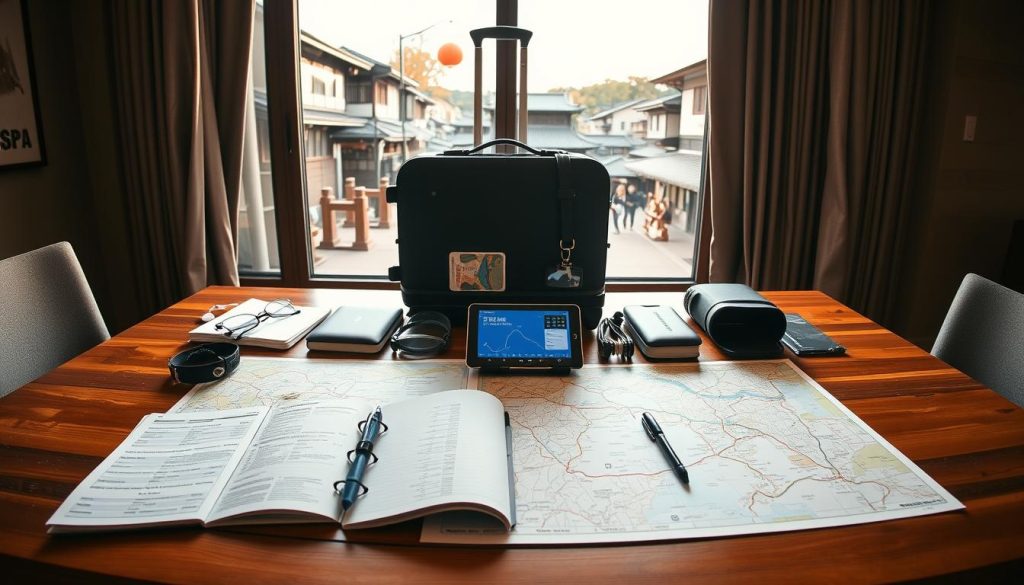
Time-Saving Travel Strategies and Regional Bundling
One of the best ways to optimize your trip is by bundling nearby attractions. For example, exploring the Higashiyama District in one day allows you to visit Kiyomizu-dera, Yasaka Shrine, and Gion without backtracking. This approach not only saves time but also lets you immerse yourself in the area’s unique atmosphere.
Another way to streamline your itinerary is by prioritizing top attractions early in the day. Arriving at popular sites like Fushimi Inari Taisha by 7:30 AM ensures you avoid the crowds and enjoy a more peaceful experience. This strategy leaves room for spontaneous discoveries later in the day.
- Group attractions by geographic clusters to minimize travel time.
- Visit popular sites early to avoid crowds and make the most of your day.
- Use public transportation efficiently by planning routes in advance.
- Leave room for flexibility to accommodate unexpected finds.
Regional bundling is another effective way to enhance your itinerary. For instance, combining a visit to Arashiyama with nearby Tenryu-ji Temple and the Bamboo Grove creates a seamless day of exploration. This method ensures you cover more ground without feeling rushed.
Remember, a well-planned itinerary strikes a balance between structure and spontaneity. By allocating time for both must-see attractions and hidden gems, you’ll create a trip that’s both efficient and memorable. With these strategies, you’re ready to make the most of every moment in this captivating city.
Accommodations and Local Stays
Finding the perfect place to stay can make or break your travel experience. Whether you’re looking for luxury or budget-friendly options, the city offers a range of accommodations to suit every traveler’s needs. From traditional ryokans to modern hotels, each place has its own charm and advantages.
Hotel, Ryokan, and Guesthouse Recommendations
For a truly authentic experience, consider staying in a ryokan. These traditional inns often feature tatami mats, futon beds, and communal baths. Many also include breakfast and a multi-course kaiseki dinner, giving you a taste of local culture. Popular options like Ryokan Inn Yoshida-sanso offer a serene retreat in Northern Higashiyama.
If you prefer modern comforts, the city boasts several luxury hotels. The Park Hyatt and Four Seasons are top choices, known for their impeccable service and prime locations. For budget-conscious travelers, guesthouses and hostels like WeBase Kyoto provide affordable yet comfortable stays.
Here are some tips to help you choose the right accommodation:
- Ryokans: Ideal for an immersive cultural experience, but book early as they fill up quickly.
- Hotels: Perfect for convenience and amenities, especially those near Kyoto Station.
- Guesthouses: Great for solo travelers or those on a tight budget.
- Airbnb: Offers spacious options for families or groups, often with unique local touches.
Location is key when selecting your stay. Staying near Kyoto Station ensures easy access to transportation, while areas like Gion and Higashiyama place you closer to historic sites. Arashiyama is another excellent choice, offering a quieter atmosphere with scenic views.
| Accommodation Type | Best For | Average Price |
|---|---|---|
| Ryokan | Cultural immersion | $$$ |
| Luxury Hotel | Comfort and convenience | $$$ |
| Guesthouse | Budget travelers | $ |
| Airbnb | Families or groups | $$ |
Travelers often rave about the hospitality and unique experiences offered by ryokans. One reviewer shared, “Staying in a ryokan was the highlight of our trip. The attention to detail and warm service made us feel truly welcomed.”
No matter where you choose to stay, booking in advance is essential, especially during peak seasons like cherry blossom or autumn foliage. This ensures you secure the best place at the best price. With the right accommodation, your visit will be as comfortable as it is memorable.
Experiencing Traditional Festivals and Local Customs
Have you ever been part of a celebration where every moment feels like a story unfolding? The city’s traditional festivals are more than just events—they’re windows into a rich cultural heritage. From the vibrant Gion Matsuri to the serene Aoi Matsuri, these celebrations bring history to life.
Each festival has its own unique charm. The Gion Matsuri, for example, features towering floats and a lively parade that draws a crowd from all over. The Aoi Matsuri, on the other hand, is a quieter affair, with participants dressed in Heian-era costumes. Both offer a glimpse into the city’s past.
To truly enjoy these events, it’s important to respect local customs. Avoid blocking pathways or using flash photography, especially during sacred rituals. Dress modestly and be mindful of your surroundings. These small gestures go a lot in showing respect for the culture.
Here are some tips to make the most of your festival experience:
- Arrive early to secure a good spot and avoid the crowd.
- Learn a few basic phrases in the local language to connect with the person next to you.
- Try local snacks from festival stalls—it’s a great way to immerse yourself in the culture.
- Be patient and enjoy the moment, even if things get a lot busier than expected.
Festivals like the Tanabata and Obon also offer unique insights. The Tanabata Festival involves writing wishes on colorful paper and hanging them on bamboo trees. Obon, on the other hand, is a time to honor ancestors with traditional dances and lanterns. Both events are deeply meaningful and provide a lot of opportunities for reflection.
Experiencing these traditions firsthand is a personal journey. It’s not just about watching—it’s about feeling the energy, hearing the music, and connecting with the community. These moments create lasting memories that stay with you long after the festival ends.
So, whether you’re dancing at the Awa Odori or marveling at the Nebuta floats, take the time to truly immerse yourself. These festivals are more than just spectacles—they’re a celebration of life, history, and culture.
Navigating Kyoto on a Budget: Tips and Tricks
Exploring a city doesn’t have to break the bank if you know where to save. With a bit of planning, you can enjoy a rich experience without overspending. Start by focusing on smart transport options and budget-friendly activities.
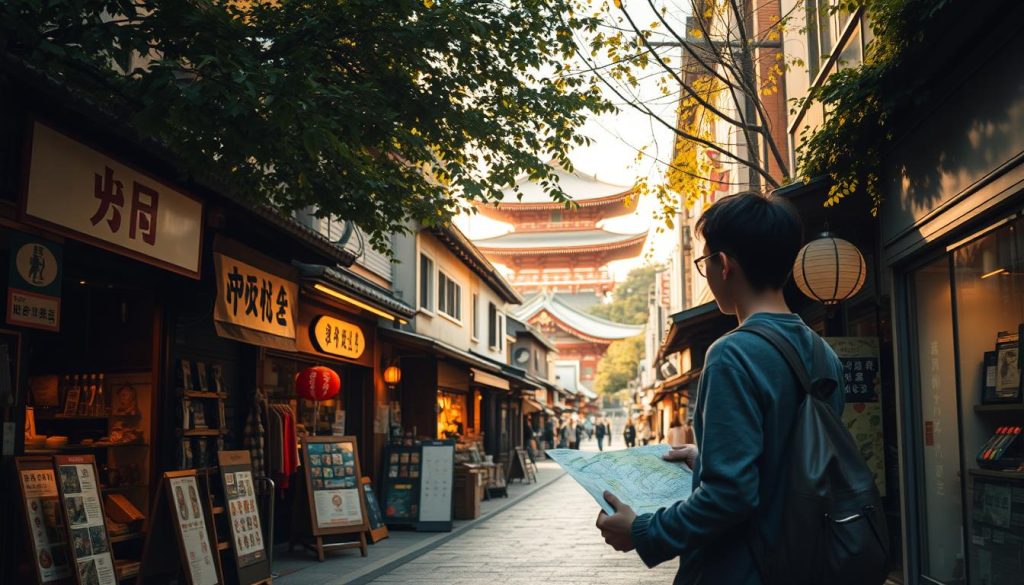
Using the JR Rail Pass and Budget Transport Options
One of the best ways to save is by purchasing a JR Rail Pass before your trip. This pass offers unlimited travel on most JR trains, making it ideal for exploring beyond the city. For shorter distances, consider using buses or subways with all-day passes, which can cost as little as ¥800.
Prepaid SIM cards are another great way to stay connected without breaking the bank. They’re widely available and offer affordable data plans, helping you navigate with ease. Avoid peak hours to save on fares and enjoy a less crowded day of travel.
- Plan your routes in advance to minimize transport costs.
- Use IC cards like ICOCA for seamless payments on buses and trains.
- Opt for budget-friendly accommodations like guesthouses or capsule hotels.
For meals, try local eateries or street food stalls. A teishoku set meal, which includes a main dish, rice, soup, and a side, is both affordable and filling. Lunch prices for kaiseki ryōri are often half the cost of dinner, making it a great option for a luxurious yet budget-friendly experience.
Finally, don’t forget to explore free attractions like the Arashiyama Bamboo Grove and Fushimi Inari-Taisha. These iconic spots offer unforgettable memories without costing a dime. With these tips, you can make the most of your day without stretching your budget.
Conclusion
As your journey through this historic city comes to a close, it’s clear why it leaves such a lasting impression. From the bustling Nishiki Market to the serene cherry blossom views along the river, every moment feels like a step into a timeless world. The charm of Higashiyama and the beauty of its parks remind us why this destination is so beloved.
Thank you for exploring this curated guide. Whether you’re planning your first visit or returning for a deeper cultural immersion, there’s always more to discover. The city’s UNESCO World Heritage sites and vibrant traditions offer endless opportunities for connection and inspiration.
Ready to start your adventure? Share this guide with fellow travelers and begin planning your next trip. The magic of this place awaits, ready to create memories that will last a lifetime.
The above is subject to change.
Check back often to TRAVEL.COM for the latest travel tips and deals.
Here are some Tours & Sightseeing suggestions that might pique your interests!
